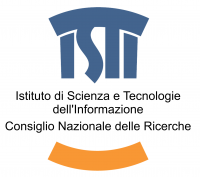ELENI KOTOULA, DAVID WAYNE ROBINSON
The aim of this session is to provide a scientific forum to present and promote the integration of computer visualization research and analytical techniques.
Recent developments in the field of computer visualization assist in documentation, analysis, preservation and interpretation of archaeological sites and artefacts, as demonstrated by research projects incorporating a variety of digital capture techniques such as laser scanning, CT scanning, MRI, photogrammetry, RTI, multi-hyperspectral imaging etc. In addition the use of virtual reconstruction as a tool to document and analyse archaeological evidence is expanding, while new opportunities arise from the application of 3d printing technologies.
Similarly, the application of analytical techniques contributes to our knowledge about materials and techniques used from our ancestors as well as materials’ preservation, decay and conservation. Various dating, microscopic and spectroscopic techniques have been developed in an attempt to reconstruct and understand human behaviour through the study of material culture. For example, portable or handheld technologies such as pXRF, pXRD, and pRaman increase by magnitudes the potential for rapid data capture of archaeological materials from in situ surfaces, soils, and portable artefacts.
This session explores the current challenges in archaeological research that can be benefited by the synergy of computational methods and instrumental analysis, including not only present research projects and case studies but also potential lines of collaboration between digital archaeologists and archaeological scientists. We welcome papers from projects and/or individuals at any stage of research that are implementing methods under the broad umbrella of archaeological computing and science to preserve, explore and analyse sites and artefacts of archaeological and historical interest.


